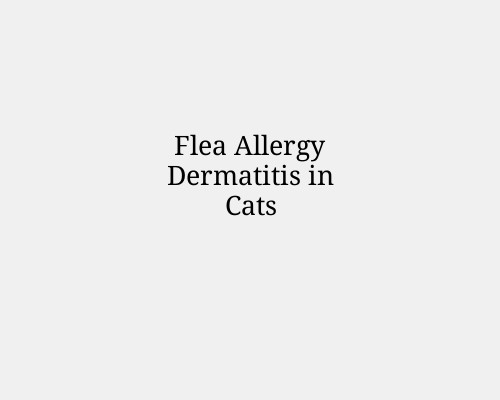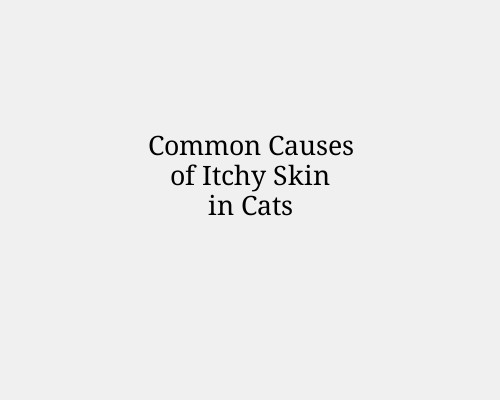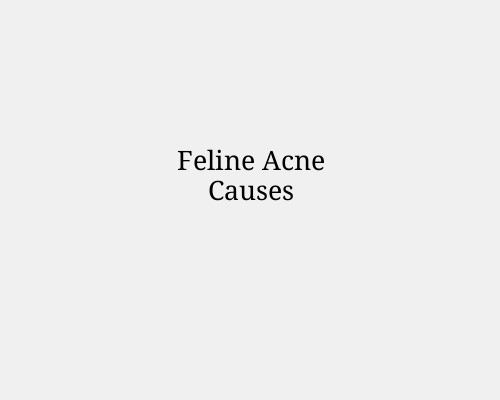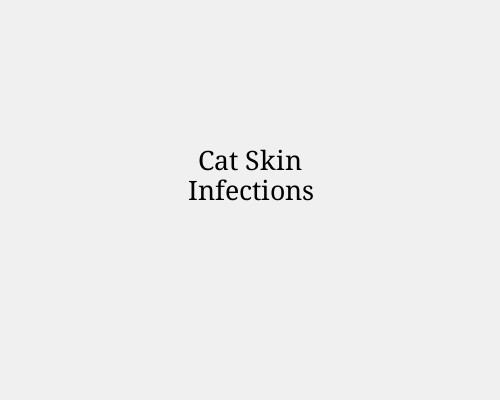Flea Allergy Dermatitis in Cats
Flea Allergy Dermatitis in Cats: Symptoms and Relief Options
Flea allergy dermatitis (FAD) is one of the most common skin conditions affecting cats. It is an allergic reaction to flea saliva, causing intense itching, skin irritation, and other complications. Even a single flea bite can trigger a reaction in sensitive cats. Understanding the symptoms and available relief options is crucial for managing this condition and improving your cat’s quality of life.
Symptoms of Flea Allergy Dermatitis in Cats
Cats suffering from flea allergy dermatitis may exhibit a range of symptoms, including:
Excessive Scratching and Grooming – Affected cats may scratch, bite, or excessively groom themselves, especially around the tail, lower back, thighs, neck, and head.
Hair Loss (Alopecia) – Due to constant scratching and grooming, bald patches may develop, particularly on the lower back and tail.
Red, Inflamed Skin – The skin may appear red, irritated, and inflamed, often with small scabs or sores.
Crusty Lesions and Scabs (Miliary Dermatitis) – Tiny scabs, especially along the back, neck, and head, are a hallmark of flea allergy dermatitis.
Skin Infections – Continuous scratching can break the skin, leading to secondary bacterial or fungal infections.
Thickened or Darkened Skin – In chronic cases, the affected areas may become thickened and hyperpigmented due to prolonged irritation and inflammation.
Restlessness and Irritability – Cats may become agitated or have difficulty sleeping due to persistent itching and discomfort.
Diagnosis of Flea Allergy Dermatitis
Veterinarians typically diagnose FAD through a combination of clinical signs, flea combing, and ruling out other skin conditions. Even if no fleas are visible, a diagnosis may still be made based on symptoms, as allergic cats may react to just a few flea bites.
Relief and Treatment Options
Managing flea allergy dermatitis involves eliminating fleas, soothing the skin, and preventing future infestations.
Flea Control
Since FAD is triggered by flea bites, strict flea control is essential:
Topical Flea Treatments – Vet-approved spot-on treatments (e.g., fipronil, selamectin, or fluralaner) kill and repel fleas.
Oral Flea Medications – Fast-acting oral treatments (e.g., nitenpyram, lufenuron) can rapidly kill adult fleas.
Environmental Control – Regular vacuuming, washing bedding, and using flea sprays or foggers help eliminate flea eggs and larvae.
Anti-Inflammatory and Anti-Itch Medications
Corticosteroids – Prescribed in severe cases to reduce inflammation and itching.
Antihistamines – May offer mild relief but are less effective than steroids.
Omega-3 Supplements – Help support skin health and reduce inflammation.
Treating Secondary Infections
Antibiotics or Antifungals – Prescribed if bacterial or fungal infections develop due to excessive scratching.
Medicated Shampoos and Sprays – Containing ingredients like chlorhexidine or hydrocortisone to soothe and heal irritated skin.
Natural and Home Remedies
Oatmeal Baths – Can provide temporary relief for itchy skin.
Aloe Vera Gel – A natural anti-inflammatory that soothes irritated skin (ensure it’s cat-safe and free of additives).
Coconut Oil – Helps moisturize and protect the skin.
Preventing Future Outbreaks
Preventing flea infestations is key to avoiding FAD flare-ups:
Use Year-Round Flea Prevention – Even indoor cats should be protected with regular flea preventatives.
Maintain a Clean Environment – Regularly wash pet bedding, vacuum carpets, and treat your home for fleas.
Check for Fleas Regularly – Use a flea comb to detect fleas early before an infestation develops.
Conclusion
Flea allergy dermatitis can significantly impact a cat’s well-being, but with proper flea control, medical treatment, and supportive care, symptoms can be effectively managed. If your cat shows signs of FAD, consult a veterinarian for an appropriate treatment plan tailored to their needs.







